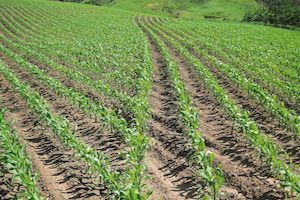Phillip Alberti, a crop science educator at the University of Illinois Extension, notes that 2018 may be the perfect year to try planting cover crops.
The growing season thus far has experienced above-average temperatures and rainfall, which has led to rapid plant growth and development, according to Alberti.
“Even though early crop ratings are not the greatest indicator of final yield, it seems we are in great shape to finish strong in Northern Illinois with cooler temperatures expected throughout the early grain filling period,” he said.
Alberti goes on to say that this year’s corn crop may reach maturity by the end of August. Earlier maturity dates may translate into an earlier harvest, meaning that fields could be cleared as early as the middle of September. This gives plenty of opportunity for winter annuals to become established before the first frost, which typically comes around October 17.
Alberti notes, however, that cover crops do not come without their own unique set of challenges. For example, specialized equipment, residual herbicides, and successful termination before cash crop planting might be obstacles. But if producers can overcome these challenges, Alberti believes that the payoff may be big.
He also notes that there is a wide variety of cover crops to choose from, each with its own specific benefit for producers’ operations. For questions on cover crops and the upcoming harvest, Alberti can be contacted at palberti@illinois.edu.
